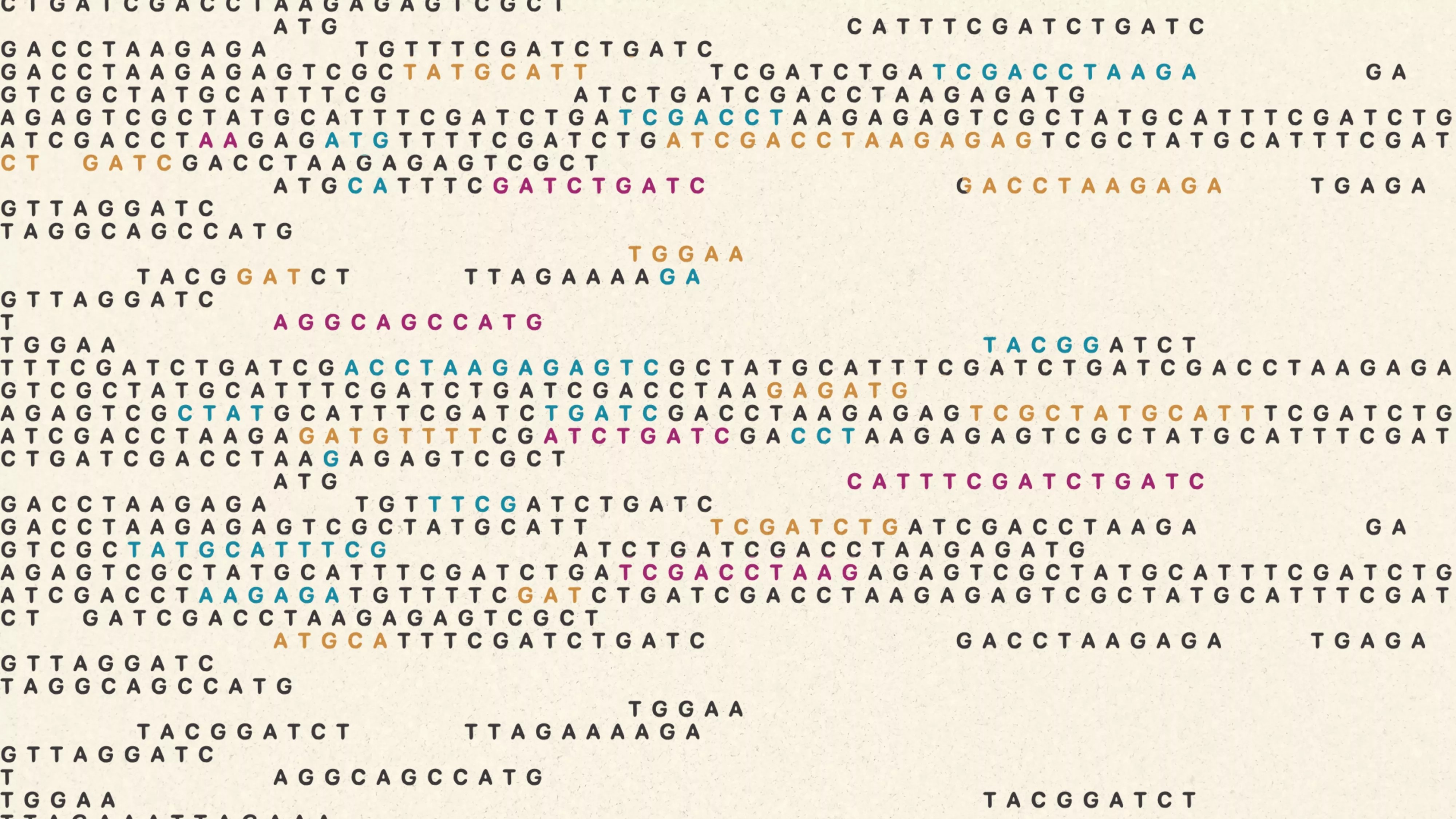The book of you
The human genome can be thought of as a book...
...The book of you
DNA is found in the cells of all living organisms. A single strand of DNA comprises a string of four main building blocks, also known as ‘bases’ (‘A’, ‘C’, ‘G’, and ‘T’). In DNA these bases pair up with other bases (G’s with C’s, and A’s with T’s) to form the characteristic double helix. One copy of the human genome is made up of approximately 3 billion pairs of bases!
Your genome can be likened to a book - the book of you. Just as letters in a specific order make up words, DNA bases in a particular order form genes. Similar to how words form the sentences which comprise meaningful stories, genes write the instructions for making proteins. These molecular marvels carry out important functions - such as transporting nutrients or defending the body against pathogens.
Of course, different words create unique stories. The subtle differences in our genes make us unique too. However, variation in these ‘bases’ throughout the genome can also contribute to disease development…
Exploring the mosaic of health and disease
Changes to our DNA (for instance, if one base is swapped for another e.g. ‘A’ to ‘T’) happen normally in our cells all the time. Sometimes these changes can alter the function of the corresponding gene. This is like when we alter a letter in a word, and it changes the word’s meaning (for instance ‘boat’ to ‘beat’).
As our genes write the instructions for creating proteins, changes to our DNA can disrupt what our proteins do. This might alter the usual reactions in our cells and lead to disease.
A small number of diseases, for instance, Cystic fibrosis or Huntington’s disease, are strongly associated with changes to a single gene which provides the instructions for particular proteins. Both our genes and our environment contribute to the development of many common diseases (e.g. Alzheimer’s disease, heart disease, diabetes). The de-identified genetic sequences of all UK Biobank participants will enable scientists to develop an understanding of how different genetics, environments and lifestyles influence whether or not we develop certain diseases.
This comprehensive exploration of the genome – called whole genome sequencing – has staggering potential for health research.


Opening the door to new insights
85% of disease-influencing genetic variations are found in the region of our DNA which makes proteins. Whole genome sequencing will reveal how genetic variation in other parts of the genome (outside the protein-forming region) is associated with health and disease.
Because of you, scientists will be able to more easily identify changes – including rare changes – in our DNA which are linked to disease.
This means classifying individuals at high risk of either common or rare diseases faster - and improving the accuracy of their diagnosis.
Your whole genome sequencing data will also create exciting opportunities for drug discovery. By looking at the genetic information of people with high risk of diseases like Alzheimer’s or diabetes, scientists may spot which genes are involved and develop drugs to stop those genes’ instructions being followed - this is known as ‘precision medicine’. Personalised treatments could be developed which are tailored to an individual’s unique genetic make-up.
Last updated
